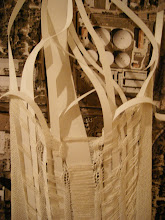In our modern city there is land that has been taken from its inhabitants, land that has been deprived of the artist, the designer and the performer even though art can exist in the most brutal of spaces. Architectural intervention can be small, piggybacking on the ready-made space, but enough to break misconceptions and glorify the infrastructure as a space-making device. Meanwhile, there is still something absurd about inhabiting this space. With that, Its functions should not be mundane. It is a place to provoke a strange urbanism and to see the world differently. Human imagination is not necessarily limited by the laws of physics or the limitations of modern urban theory. It offers an alternative approach to thinking about cities, how they are formed and how they function.
Much of the city is barred off from the public as it is subdivided and privately owned. However, owned by the city, this space already belongs to the citizen and it is his right to inhabit it. In a environment gasping for breath, it is important to capitalize on the infrastructure that already exists. The highway acts as a barrier within the city. Infiltrating its voids allows the city to redeem an existing architecture to frame relationships between existing urban fabrics. Approximately 30 acres (23 football fields) of unused space lay beneath a raised highway interchange.
Creating a subversive architecture and urbanism that is not just invasive, but traitorous to an existing conception of the life underneath a highway, my project is about acknowledging edges and invading them. Shifting the perception of an edge so that the actual thing becomes permeable and inhabitable. On the site, there are edges between grains/fabrics/textures and my thesis is about breaking down and diluting the edge. When the textures collide, they fuse and transition into one another, creating moments of thresholds and recentering for meaningful exchange. In these instances, the thresholds are often more exciting than space they border. The reclaimed space within the edge allows for flexible, and unscripted inhabitation.
Similar to the flow of the highway above, there are gradients of speeds within the site. The curves of paths are determined by the radii of flow. For example, the shape of a turn intended for the individual is dramatically different from one intended for a crowd.
Scholars can predict the size of cities by their water supply. The Roman aqueducts were the greatest engineering feats of the ancient world, creating massive marks across the landscape. The highway is our urban cathedral. If our culture was to fall as the Romans did, the highway would be what is left behind. Creating a culture of alternative guerilla urbanism will indicate a culture of connectivity, flux, and ephemerality.
Sunday, April 26, 2009
highway manifesto
Subscribe to:
Post Comments (Atom)

No comments:
Post a Comment